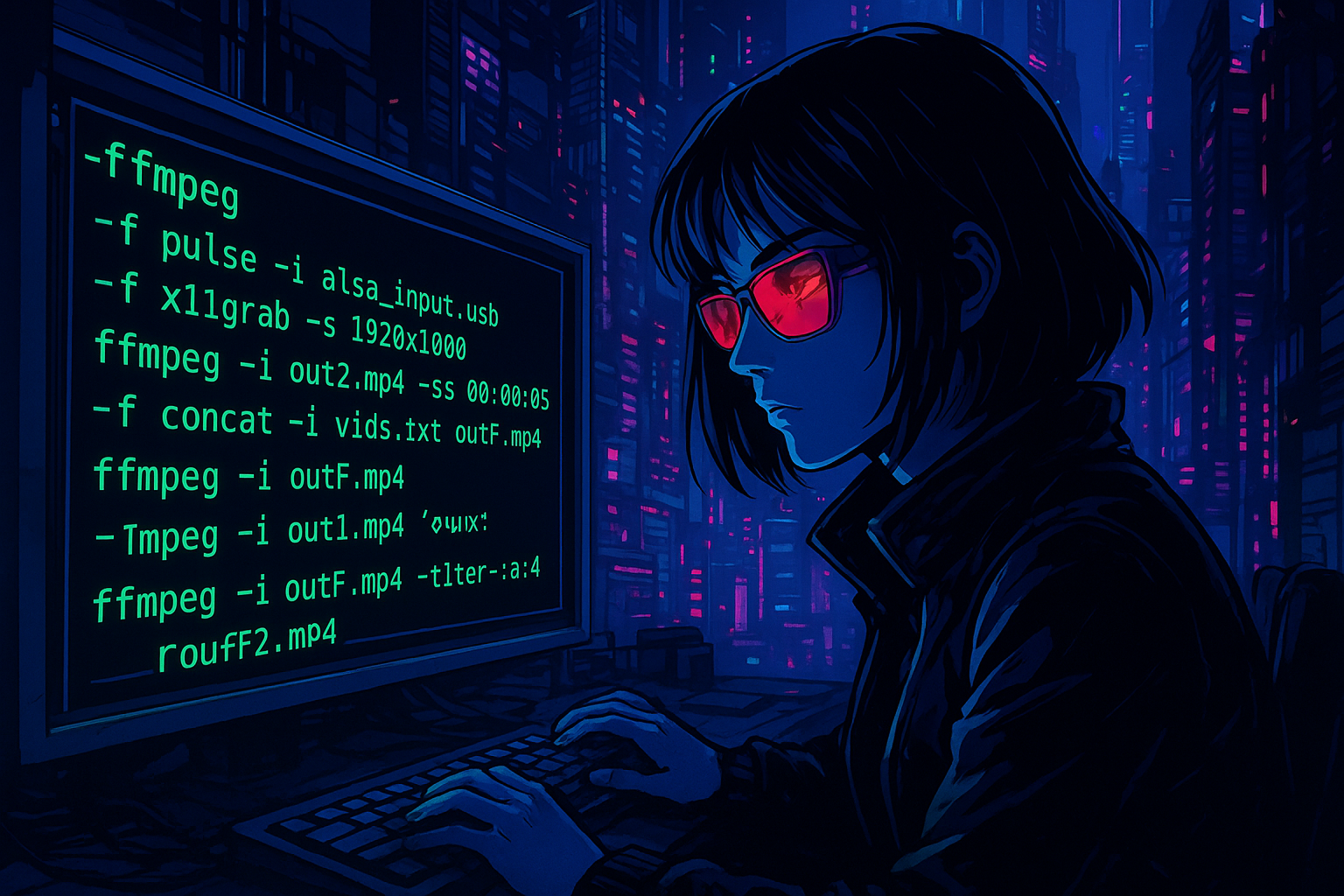
Introduction
Most people edit their YouTube videos with slick GUIs: Premiere, DaVinci Resolve, Final Cut Pro, even OBS + Shotcut for the open-source crowd. Me? I’m allergic to timelines and mouse-dragging. I prefer to edit in the most brutalist way possible: directly from the terminal, using nothing but ffmpeg.
Yes, I’m basically editing like a robot with a text editor and command lines. It’s unusual, it’s nerdy, but it works. Let me walk you through my strange ritual.
Step 1 — Recording the Chaos
I start by summoningffmpeg to record my microphone and my screen at the same time. One incantation later:
ffmpeg \
-f pulse -i alsa_input.usb-JMDZ_MICROPHONE_WOODBRASS_UM1_20211207-00.mono-fallback \
-f x11grab -s 1920x1080 -i :0.0
-f pulsetellsffmpegto grab audio throughPulseAudio, my sound system on Linux.- Then I point it at my mic input.
-f x11grabsays: “grab the X11 display,” my desktop.-s 1920x1080means standard Full HD.:0.0is my main screen.
Boom. Both my screen and my voice are recorded straight into a video file, no OBS required.
Step 2 — Slicing the Recording
Now I have a few raw takes: out1.mp4, out2.mp4, etc. They’re messy. Instead of dragging clips into a timeline, I slice them like a surgeon:
ffmpeg -i out2.mp4 -ss 00:00:05 -to 00:02:30 out2b.mp4
Here I chop off the boring parts and keep only what I want. Each cut produces a cleaner clip: out2b.mp4, out3b.mp4, and so on.
Step 3 — The Magic Playlist File
When I’ve gathered my chosen clips, I don’t drop them into an editor. Instead, I write them into a plain text file—like I’m drafting a mixtape playlist from the ’90s:
vids.txt
file 'out2b.mp4'
file 'out3b.mp4'
file 'out4b.mp4'
file 'out5b.mp4'
...
It’s so simple it’s almost funny.
Step 4 — Concatenating the Franken-Video
Now the playlist becomes a full video. One command glues everything together:
ffmpeg -f concat -i vids.txt outF.mp4
That’s it. No “export” button, no “render queue.” Just a stitched-up Frankenstein video.
Step 5 — Making It Louder (Because YouTube Audio Is Always Too Quiet)
My mic always records a bit too softly. Instead of fiddling with audio settings, I just crank the gain afterward:
ffmpeg -i outF.mp4 -filter:a "volume=3.0" outF2.mp4
Voilà (allow it, i'm french). The final file, outF2.mp4, is YouTube-ready.
Why Do It This Way?
- It’s fast once you memorize the commands.
- It’s scriptable, I can automate my whole editing pipeline.
- It feels like
cyberpunkwizardry.
Sure, it’s not “normal.” But if you enjoy the command line and want a lightweight, minimalist approach to editing, ffmpeg can handle it all: recording, cutting, concatenating, and even audio fixes.
And that’s how I edit my YouTube videos in the weirdest, nerdiest way possible —> no timeline, no GUI, just pure ffmpeg kung-fu.
Comment